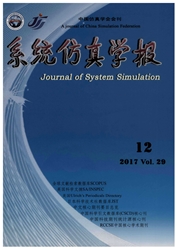

 中文摘要:
中文摘要:
结合几何光学和一致性劈绕射理论,实现超宽带确定性信道的仿真。应用类似矢量网络分析仪的原理,计算超宽带信道的时域响应和信道损耗。在应用基于镜像的射线追踪方法进行路径计算时,引入了一种控制仿真深度的方法。该方法在构建镜像树时预测每个子节点可产生的最小衰减值,并将其与期望衰减阈值进行比较的,以达到控制镜像树规模的目的。与以反射和绕射阶数控制仿真深度的方法相比,该方法在保证同样精确度的条件下能够有效地减少计算时间。为了增强仿真结果的表现形式,仿真借用3D游戏平台,实现了信道损耗的立体可视化。
 英文摘要:
英文摘要:
A deterministic Ultra-Wide Band (UWB) channel simulation in a complex indoor environment was performed using GO/UTD (Geometrical Optics/Unified Theory of Diffraction) method.The time domain response and path loss of UWB channel were computed on the principle which is similar with VNA (Vector Network Analyzer).When image-based ray tracing method was used to compute the propagation paths,an algorithm of controlling the depth of image tree was introduced to improve the simulation performance.It limits the scale of image tree by predicting the potential minimum attenuation,which may be caused by a ray propagating from root node to child node,and comparing the predicted value with an expected maximal attenuation threshold when image tree is being constructed.Compared with simply using reflection or diffraction orders to control the scale of image tree,using this method can effectively reduce the computing time in the same accuracy condition.In order to enhance the representation of the simulation result,the visualization of path loss distribution was implemented by a 3D game platform.
 同期刊论文项目
同期刊论文项目
 同项目期刊论文
同项目期刊论文
 期刊信息
期刊信息
